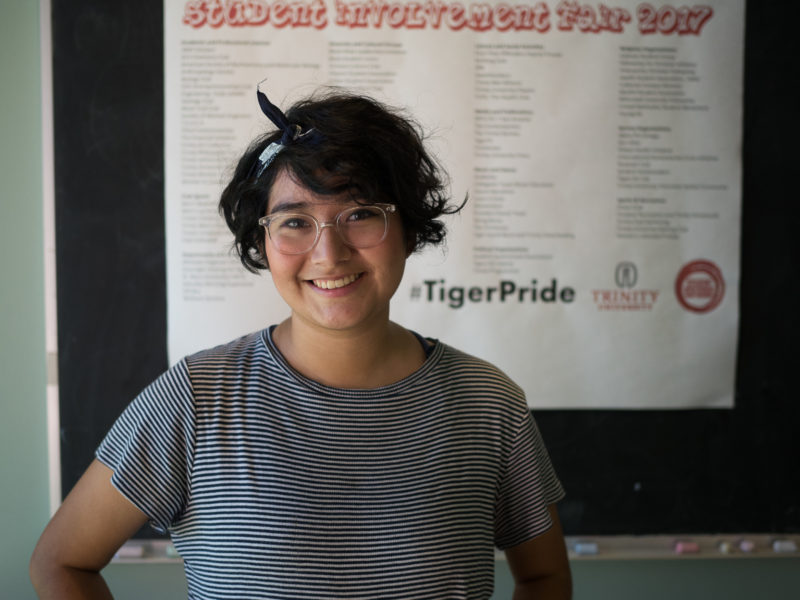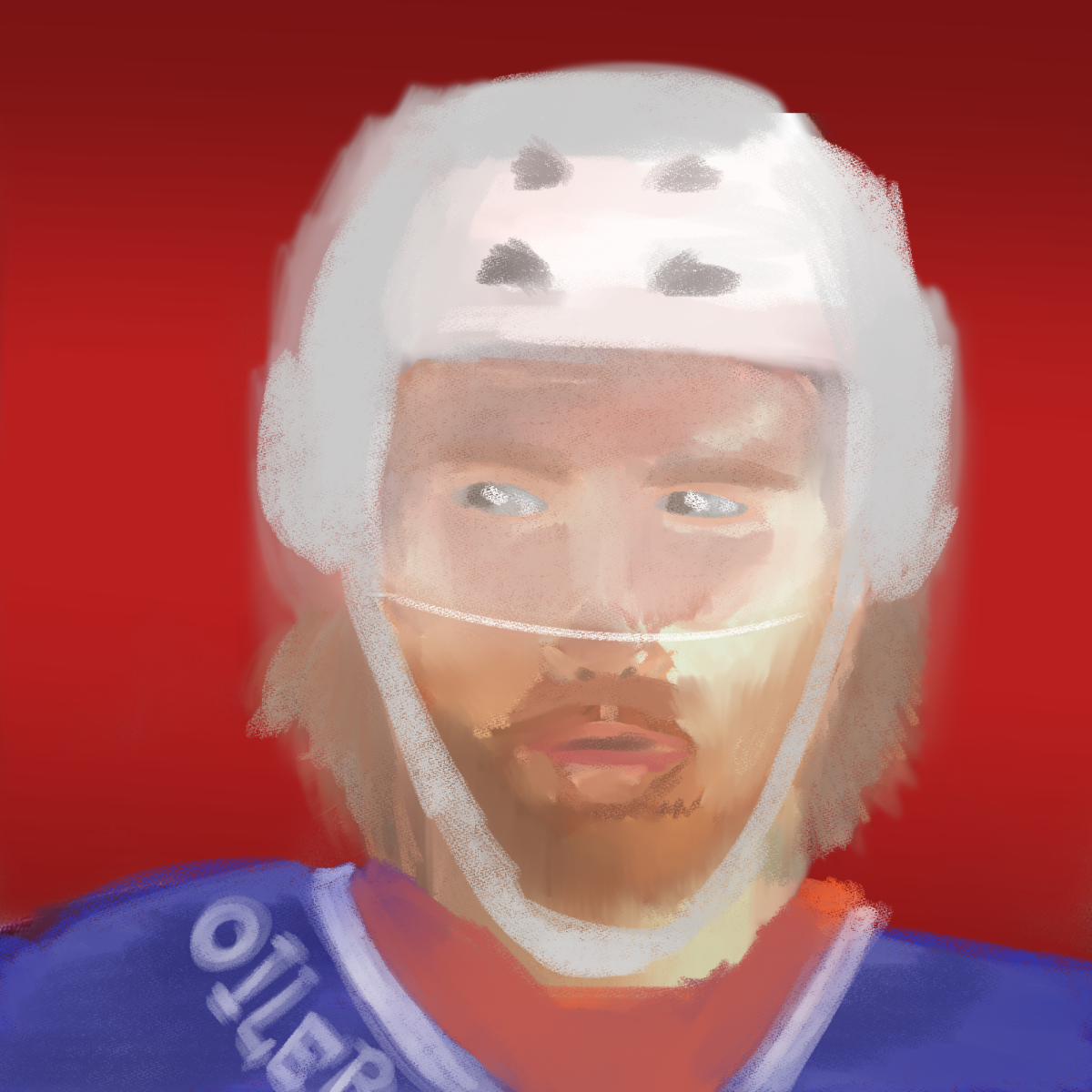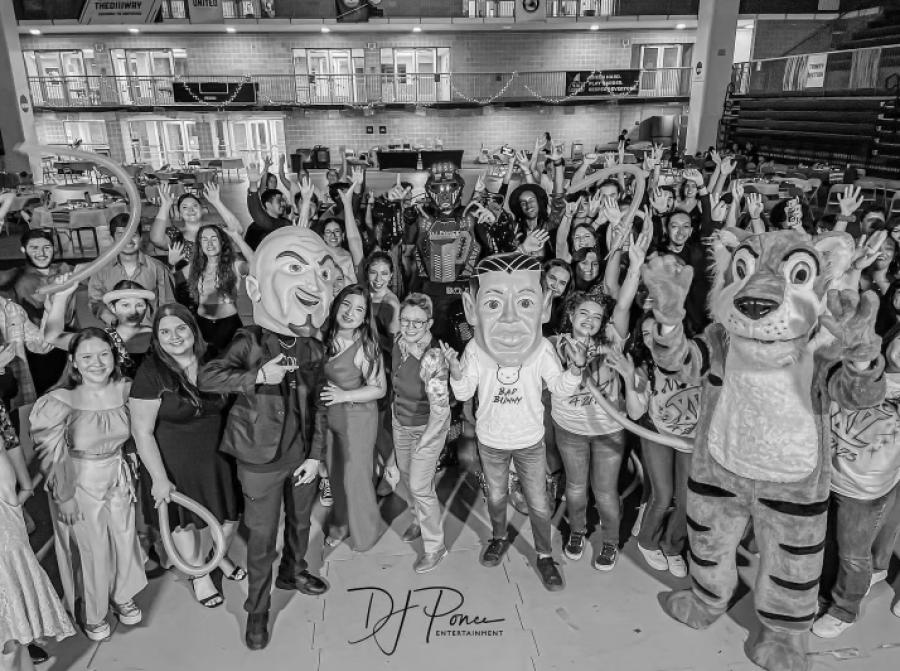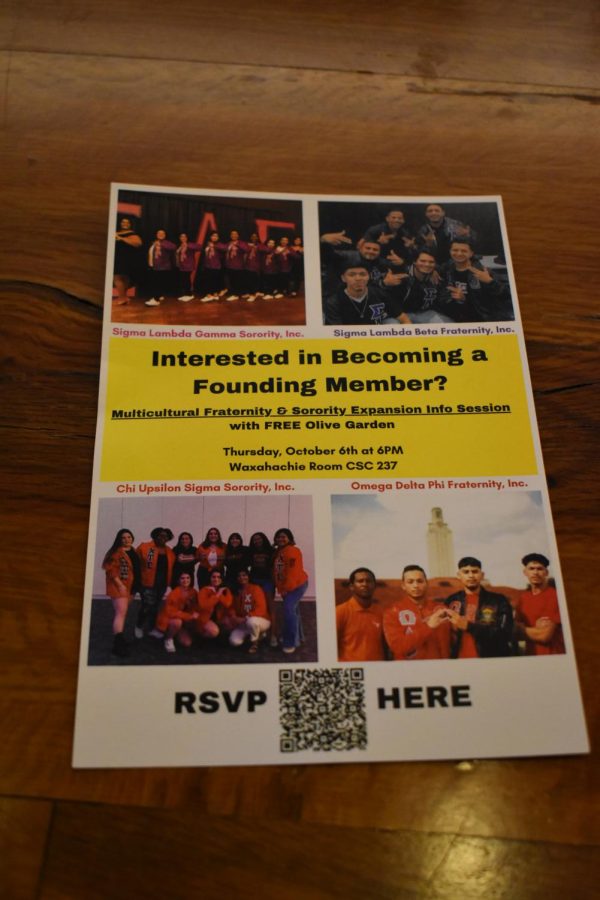This past summer, senior communication major Andrea Acevedo worked with Aaron Delwiche, professor of communication at Trinity, to utilize virtual reality to shed some light on immigration detention centers, which directly affect San Antonio. Acevedo’s project, the Butterfly Project, was a part of the Mellon Initiative, a summer research program for students majoring in the arts and humanities.
Immigration detention centers are a large part of the immigration process in which people are taken by the U.S. Immigration and Customs Enforcement (ICE) and detained for months or even longer.
“I set up this project like a museum talking about immigration systems. Picture a museum hall with different exhibits. Instead of an actual story, it’s like a museum,” Acevedo said.
Delwiche worked with Acevedo to help her develop her ideas.
“We developed the idea together, and I had worked with Andrea in previous classes. I knew that she had the right personality for this type of project, and I knew that she was interested in virtual reality,” Delwiche said.
When it came to using virtual reality, Acevedo and Delwiche decided that this specific type of technology would help inform those who experience the exhibit about what it feels like to be in a detention center.
“Virtual reality doesn’t make sense for certain types of stories. In this case, what we were trying to do was look at a situation that most people have not experienced and that, when you do experience it, could lead to a certain amount of empathy for people to understand what conditions refugees and asylum seekers face in detention camps,” Delwiche said.
Acevedo modeled everything in a program called Maya and eventually put it into High Fidelity, a social virtual reality space in which users can edit things within a virtual world.
Although Acevedo was not able to visit a detention center, she came up with other ways to create a model for her virtual experience.
“We had to find a lot of existing photographs and, based on different objects inside the photographs, I was able to create a rough scale of the rooms,” Acevedo said.
Delwiche had some previous experience working with virtual spaces, but as always with ever-changing technology, it was a learning experience for both of them.
“About 10 years ago, I formed a startup company with three other people that created things in virtual spaces like High Fidelity, but for educational and corporate clients. I was able to draw on that experience for Andrea, but much has changed with the new equipment, so she just got her hands on the equipment and was off to the races. She did a ton of work on her own, and it was really amazing what she did,” Delwiche said.
Reactions from the viewers were mixed, but virtual reality still has the potential to be a platform for various stories.
“One thing we find from research time and again is that audiences have completely different reactions to the same content. For some, I think it’s likely that technology overshadowed the story,” Delwiche said.
One of the people who experienced this virtual reality was Zhaoxi Liu, professor of communication, who was intrigued by the idea of using a new type of technology to connect with viewers.
“That was the first time I went into the virtual reality created by a student. The layout of the space was nicely done. The individual stories in the virtual world “‹were very touching,” Liu said in an email interview.
Even though the summer is over, this project isn’t. Acevedo hopes to expand her project and develop the virtual reality into a narrative with more depth for viewers during her senior year.
“I am hoping to continue this for my capstone, so maybe for the second part of this I can interview one specific person and create a narrative,” Acevedo said.






